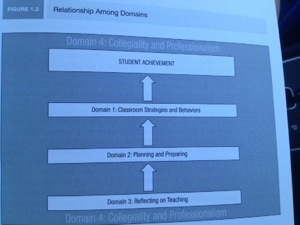http://arstateimprovementgrant.com/
Common Sense Practice #1 (Leadership)
7 C’s of success:
formal and informal processes that facilitate:
Communication
Caring
Collaboration
Commitment
Consultation
Celebration
Consistency
among school staff and district staff
Committees – reflect the research-based components of effective schools and schooling
Recommended:
The School Leadership Team (all committee co-chairs are members)
The Curriculum and Instruction Committee
The School Climate/ School Discipline Committee
The Professional Development/ Teacher Mentoring and Support Committee
The Family and Community Outreach Committee
The Student Assistance/ Multi-tiered/ Early Intervention Committee (made up of the best academic/ behavioural assessment/ intervention specialists in or available to the school)
All professionals regardless of their department or administrative assignment, are organised in cross-collaborative teams that focus on the following outcomes:
- Students’ academic learning, mastery, and application
- Students’ social, emotional and behavioural self-management and interpersonal success
- Teachers’ effective instruction relative to student academics and self-management outcomes
- Meaningful professional development and staff support to facilitate effective instruction and multi-tiered intervention resulting in successful student outcomes
- Community and family outreach to maximise their support, collaboration, and involvement in educational processes/ activities at the district, school, and student levels
Common Sense #2 (Instruction)
Differentiated Instruction will not work when there are too many different skill groups in a classroom, or when teachers do not know the functional skills levels of their students.
Organisational suggestion for setting up classes – not too much of a range in abilities (skills based learning clusters)??? Possible?
Knowing the Zone of Proximal Development level of all students
* Use PAT-R, PAT-M, Running Records, etc.
* Data management system to pass on information from teacher to teacher essential.
Refer to: http://arstateimprovementgrant.com/
Common Sense Practice #3 (Assessment):
Every year level (or course) needs developmentally-appropriate curricular maps, that identify the knowledge, content and skills needed by students, along with the criteria for student mastery: and for every teacher to have the skills, materials, and opportunity needed to effectively differentiate and teach, assess, and monitor students’ learning and mastery.
Yes!! I feel that the most success we have had this year in terms of Professional Development has been developing a clear understanding of the skills and understandings needed by students in terms of reading comprehension. Analysing the PAT-R descriptive continuum helped to understand what students needed to be taught. Using this assessment tool helped teachers to identify the Zone of Proximal Development of each student from Year 2-7. From here clear goals were established for student learning, and instructional opportunities were planned to scaffold students’ learning.
Question: How closely are the PAT-R tests aligned with the Australian Curriculum?
This process need to be done in relation to the Australian Curriculum year level expectations.
Common Sense Practice #4 (Services and Support):
Share Resources
SWOT Analysis
Strengths, Weaknesses, Opportunities, Threats
Interdependent Audits:
- Strategic Planning, Organisational Stability and Data-driven Decision Making Audits
- Academic and Health/ Mental Health/ Wellness Curriculum, Curricular Alignment, and Curriculum Selection Audits
- Technological Hardware and Software Curriculum, Instruction, and Intervention Support Audits
- Professional Development, Supervision and Staff Evaluation Audits
Completing and sharing these audits allows everyone to know the resources available (and not available) and how they can be utilised.
Resources must be used to support needs of students. Communicating what resources are available, and sharing these across the school are important.
Blog: http://myemail.constantcontact.com/Rich-District–Poor-District–Common-Sense-Practices-to-Maximize-Resources-and-Improve-Student-Outcomes.html?soid=1102564327552&aid=g4Ebne95rHY


